Carrying a “Lucky” Bullet

Many old-time frontiersmen believed in carrying a single bullet they never intended to fire, according to the Los Angeles Times. Whether it was a keepsake from a particularly harrowing gunfight or just a talisman against bad luck, this habit stuck with some modern Westerners. Some hunters and ranchers still keep an old cartridge in their pocket, claiming it brings good fortune. It’s not exactly practical, but when you’re out in the wild, a little superstition can’t hurt.
The idea was that as long as you had one bullet left, you weren’t out of options. Some old cowboys even passed their lucky bullet down to family members, treating it like a charm. Today, you might see an old rancher pull a dusty cartridge from his pocket and smile as he tells you why it’s never been used. Maybe it’s just a story, but for those who believe, that one bullet holds a world of meaning.
Drinking Coffee With Eggshells
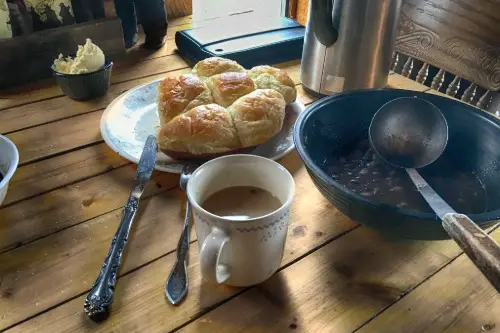
Cowboys and trappers didn’t have the luxury of fancy coffee filters, so they used crushed eggshells to settle the grounds. The calcium in the shells helped neutralize the coffee’s acidity, making it smoother to drink, according to the Corner Coffee Store. Believe it or not, some old-timers in the West still swear by this trick. You’ll even find a few backcountry guides and chuckwagon cooks who insist it makes the best campfire coffee.
The practice isn’t just for tradition—there’s actually some science behind it. Eggshells help bind with the tannins in coffee, making it less bitter. While most people just use a regular coffee maker these days, there are still those who keep a stash of eggshells handy. It might look strange, but once you try it, you might not go back.
Hanging a Hat on the Bed is Bad Luck
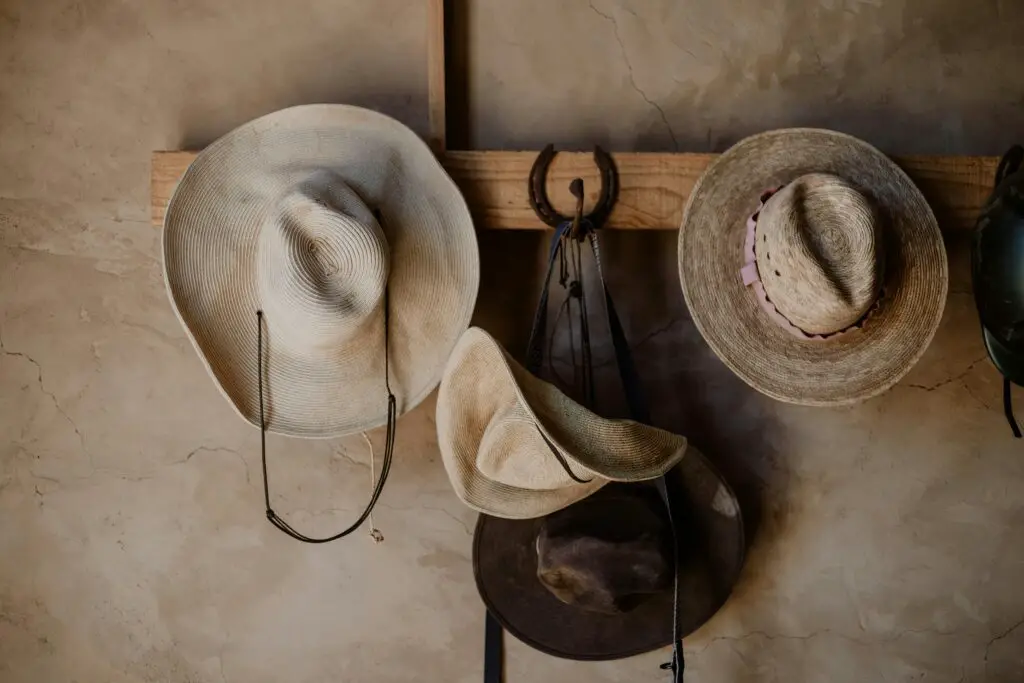
Many frontiersmen refused to place their hat on a bed, believing it would bring bad luck or even death, according to American Cowboy. Some say this belief started with cowboys who noticed their hats collected dust, lice, or other pests that could spread disease. Others claim it has roots in an old superstition about the hat being too close to the head of a recently deceased person. Either way, many Westerners today still follow this unwritten rule.
Even in modern ranch houses, you’ll see hats placed anywhere but the bed—on a hook, a chair, or even the floor. Some rodeo riders and ranch hands won’t even joke about breaking this rule. If you accidentally toss your hat on a bed, expect someone nearby to snatch it up and shake their head in disapproval. Superstition or not, it’s one habit that refuses to die.
Using a Knife as a Fork
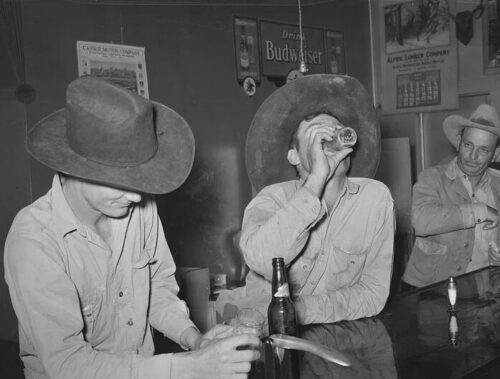
Frontiersmen often ate with just a knife, stabbing food instead of using a fork, according to The Oklahoman. This was partly because knives were multi-purpose tools, while forks were seen as unnecessary luxuries. Even today, some old-school ranchers and outdoorsmen still eat steak and beans straight from their knives. If you visit certain cowboy cookouts, you might get some strange looks if you ask for extra utensils.
This habit isn’t just about tradition—it’s about practicality. When you’re cooking over an open flame, it’s easier to use a knife to spear food than to fumble with a fork. Many Westerners see it as a sign of toughness, a nod to the no-nonsense way of life their ancestors lived. If you ever find yourself dining with an old rancher, don’t be surprised if he carves up a piece of meat and eats it straight off the blade.
Spitting to Check the Wind
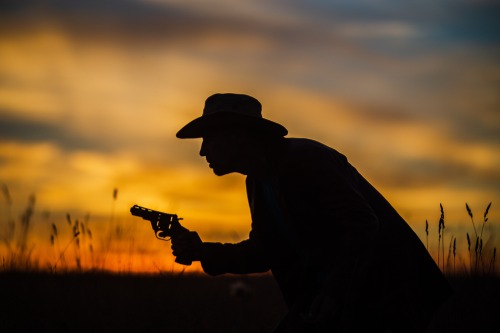
Back in the frontier days, knowing the wind direction could mean the difference between a successful hunt and a wasted afternoon. Cowboys, hunters, and scouts often spit into the air to see which way the wind was blowing. This was especially useful when tracking animals or preparing for a long-range shot. Believe it or not, this habit is still alive and well among Western outdoorsmen.
Many hunters and ranchers still prefer this method over checking a weather app. Some say it’s faster and more reliable, especially when standing in a field or on horseback. You might even see rodeo cowboys do it before a ride to gauge arena conditions. It’s a simple trick, but for those who rely on nature, it’s second nature.
Talking to Horses
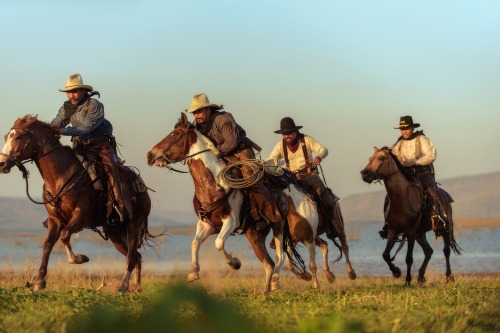
Old-time cowboys swore by the power of a soft voice and steady talk to calm their horses, according to the Lincoln Equestrian Center. They believed that speaking gently while saddling up or riding helped build trust between rider and animal. Today, many ranchers and rodeo riders still murmur to their horses as they work with them. If you spend time around real cowboys, you’ll notice that they rarely ride in silence.
It might sound strange to outsiders, but this habit has practical benefits. Horses respond to the tone and rhythm of a rider’s voice, which can help in tense situations. A whispered “easy now” or a quiet conversation while brushing a horse can make all the difference. In the West, a cowboy’s voice isn’t just for people—it’s for their four-legged partners too.
Wearing a Bandana for Everything

Frontiersmen rarely went anywhere without a bandana, and for good reason. It doubled as a dust mask, a sweat rag, a bandage, or even a makeshift water filter. Cowboys and trappers relied on it to protect their necks from sunburn and keep trail dust out of their noses. Even today, you’ll find ranchers and rodeo riders with a bandana tucked in their pocket or tied around their neck.
The modern West may have fewer cattle drives, but the bandana hasn’t lost its usefulness. Some ranchers still use it to wipe sweat, while bikers and hikers wear it against dust and wind. It’s a simple tool with endless uses, making it a favorite for anyone who works outdoors. If you ever forget one while traveling in cowboy country, someone will probably tell you you’re not prepared.
Burning Cow Chips for Fuel
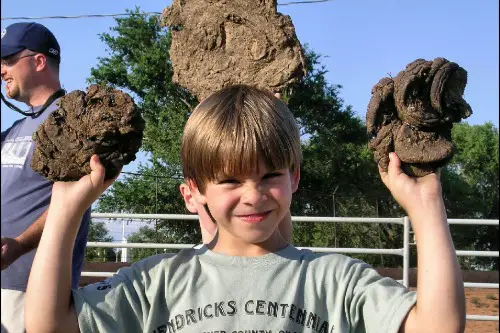
Out on the frontier, wood wasn’t always easy to find, so settlers and cowboys burned dried buffalo or cow manure instead. Known as “cow chips,” these dried patties produced enough heat for cooking and warmth without too much smoke. It may sound unpleasant, but in treeless areas like the Great Plains, it was the best option. Believe it or not, some off-grid ranchers and survivalists still use this old trick.
While most people today rely on propane or firewood, cow chips are still burned in some parts of the West. They’re often used at historical reenactments or chuckwagon cookouts to demonstrate how pioneers lived. Some old-timers even claim the slow-burning nature of dried manure makes it a great heat source. If you ever see a cowboy tossing a dried patty into the fire, don’t be too quick to judge—it’s a time-tested fuel.
Rubbing Raw Meat on a Saddle

This one might seem downright bizarre, but back in the day, frontiersmen would rub raw meat on a new saddle to soften the leather. The natural oils from the meat helped condition the hide, making it more flexible and comfortable. Some modern ranchers and saddle makers still swear by this technique, though most now use commercial leather conditioners. If you see a cowboy rubbing a steak on his saddle, he’s not losing his mind—he’s just sticking to tradition.
The practice has its roots in necessity, as pioneers often had limited supplies for leather care. Animal fat was one of the few things readily available on the frontier, so it made sense to use it. While saddle soaps and oils have mostly replaced this method, a few purists still prefer the old ways. It may be unusual, but for those who’ve tried it, the results speak for themselves.
Cutting Off Boot Toes for Comfort
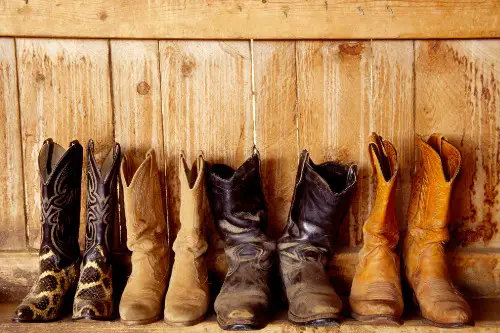
Cowboys spent long hours in the saddle, and sometimes their boots were too tight, especially in hot weather. Rather than buy a new pair, some simply cut the toes off their boots to relieve the pressure. This was especially common for men who had outgrown their boots or suffered from swollen feet. Even today, you’ll occasionally see an old ranch hand with a pair of boots missing their toes.
It may seem like a drastic solution, but for those who worked in remote areas, buying new boots wasn’t always an option. Some cowboys even claimed the open-toe design helped their feet stay cooler in the summer heat. While most modern Westerners would rather get a properly fitted boot, a few die-hards still hack the toes off when comfort calls for it. It’s an old-school fix that proves cowboys aren’t afraid to improvise.
Never Shaking Hands on Horseback
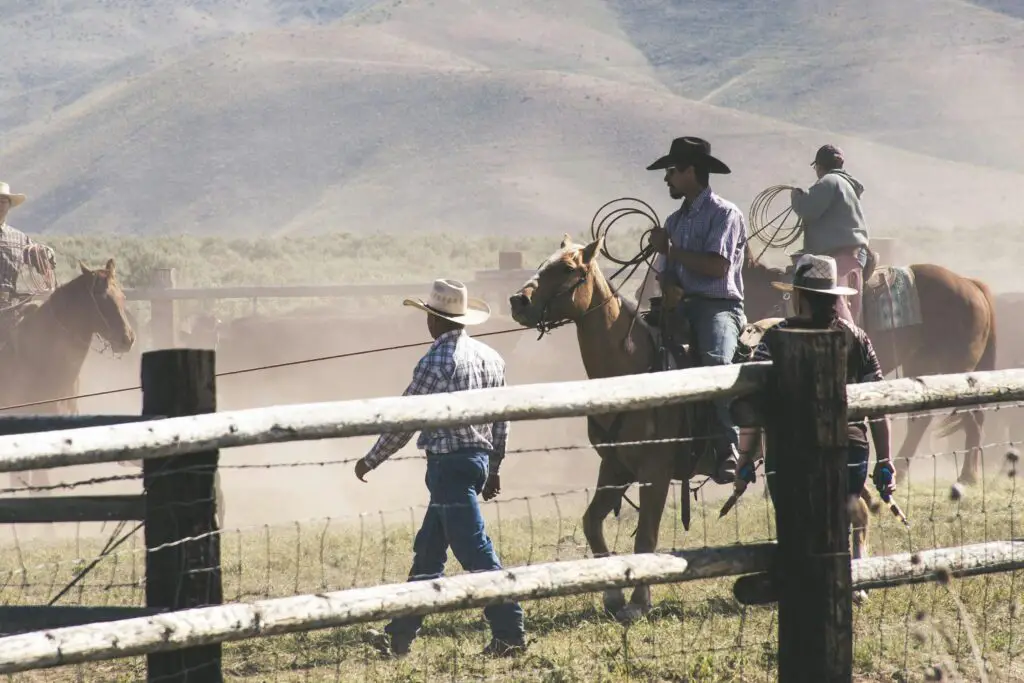
On the frontier, shaking hands while on horseback was considered bad manners and even dangerous. It could startle the horses, cause a loss of balance, or even be a trick to unseat an unsuspecting rider. Instead, cowboys greeted each other with a nod, a tip of the hat, or a simple “howdy.” Even today, many Westerners avoid shaking hands while in the saddle.
This unwritten rule persists among modern cowboys, rodeo riders, and horse trainers. Some say it’s a matter of respect, while others just see it as a practical safety measure. If you ever try to shake hands with a cowboy while he’s on horseback, don’t be surprised if he politely declines. In the West, some traditions aren’t meant to be broken.
Keeping a Beard for Warmth (Not Just for Looks)
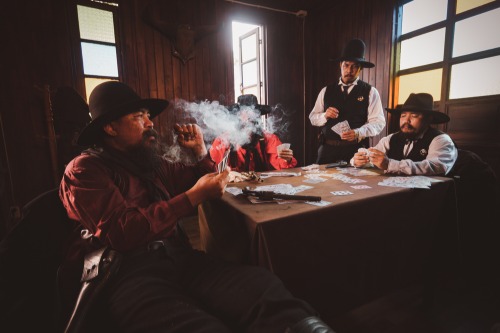
Long before beards were trendy, frontiersmen grew them out for a practical reason—warmth. A thick beard provided insulation against the biting winds and frigid temperatures of the frontier. Cowboys, trappers, and mountain men rarely shaved in the winter, believing a bare face was a surefire way to freeze. Even today, many Western ranchers and outdoorsmen let their beards grow thick when the cold weather rolls in.
Unlike the carefully groomed beards of today, frontier beards were rugged and wild. Some cowboys still take pride in growing a winter beard and consider shaving before spring a sign of weakness. You’ll see plenty of bearded ranchers in the mountains, where the wind can cut like a knife. It’s not just a fashion statement—it’s a survival tool that’s been passed down for generations.


